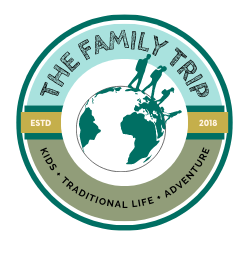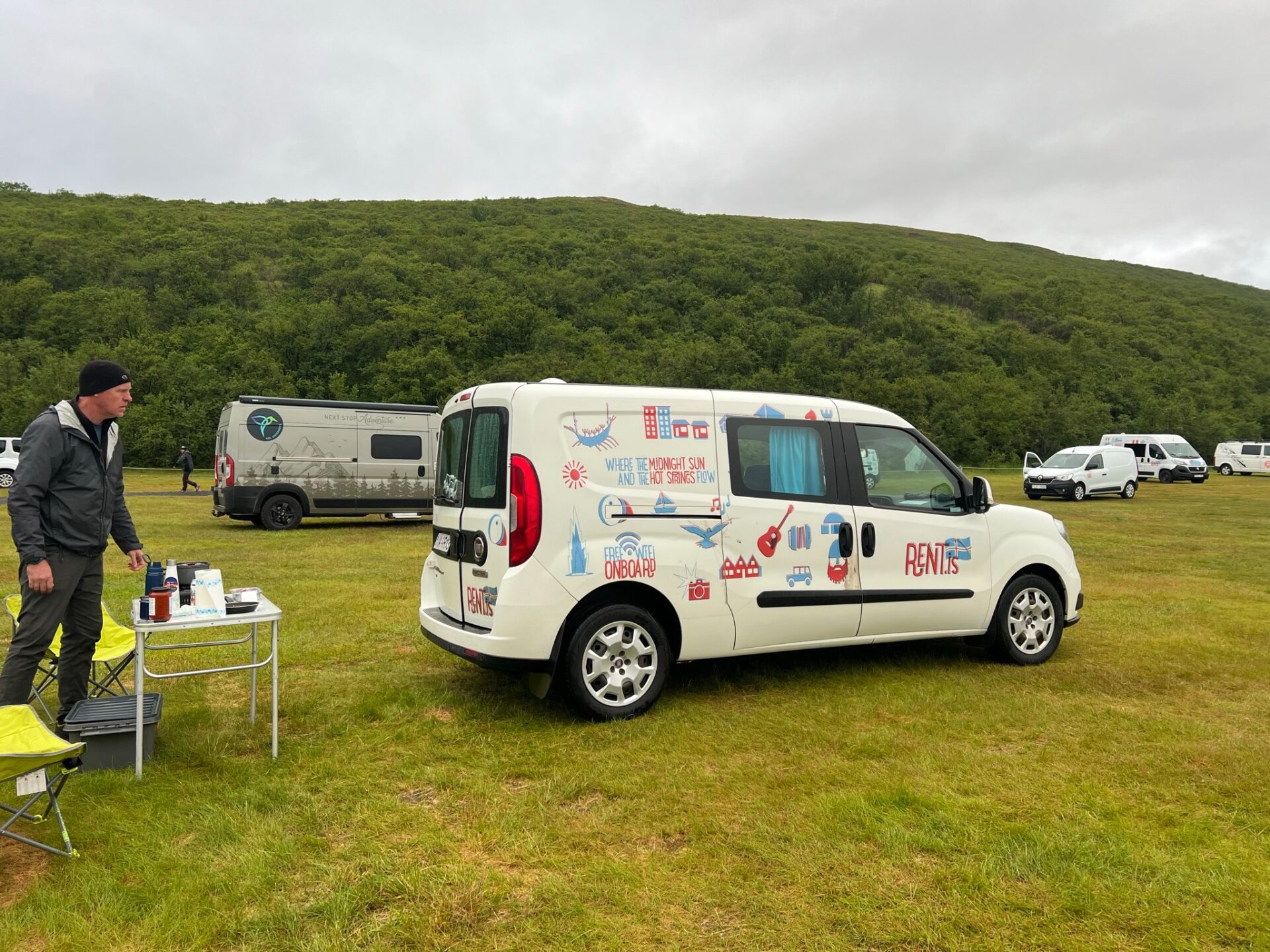
We’re campers – we love camping, living outside, exploring nature. We bought a pop-up years ago and haven’t looked back. Yet camping in a different country was a totally new experience.
We rented a campervan in Iceland and we loved it.
I realize now how weary and close to burn-out I was before we went to Iceland. The kids’ activities, changing jobs without a break in between, and major work projects resting on my solo shoulders, everything had come to feel heavy. I thought what I needed was sleep. I would go to bed and fall right asleep at 9:00 pm, I would take naps on the weekends, I slept in whenever possible.
But it turns out I wasn’t craving sleep. I was craving freedom.
I wanted freedom from the responsibilities and the weight of it all. I needed a momentary escape and to recenter my life. Sleep wasn’t the answer. Freedom was.
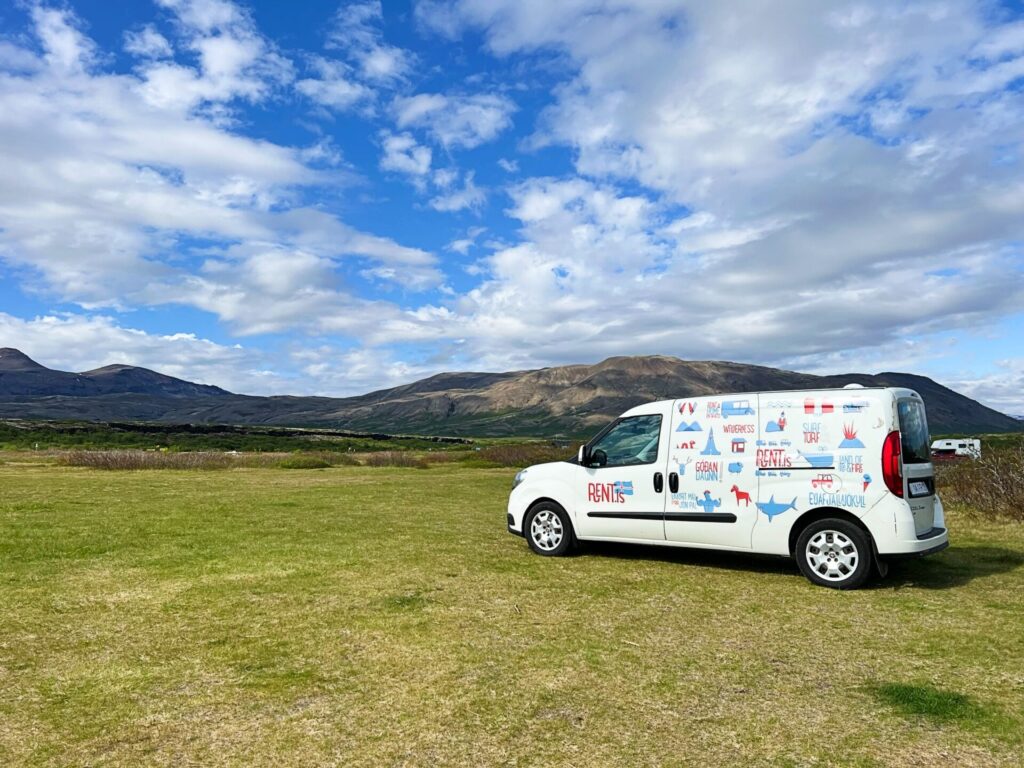
I wouldn’t have guessed it at the time, as renting our campervan was more of a necessity and scary new adventure in my mind than anything else. Ultimately, the joyful freedom spoke to me and helped me stitch up some wounded spirits in a way I never would have anticipated.
Table of Contents
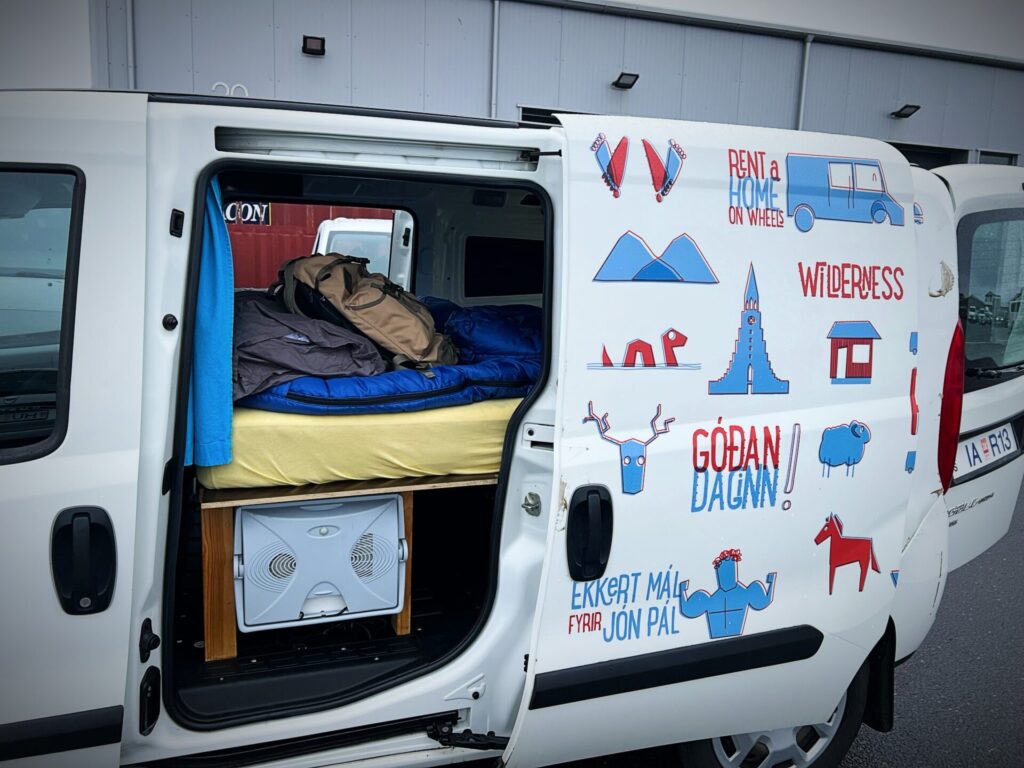
Why We Rented a Campervan in Iceland
The most honest version of why we rented a campervan is because we were too late to get lodging in some areas we wanted to visit!
As I shared in this post, Iceland is very popular. Some regions and towns simply don’t have enough lodging to accommodate all the people who want to be there. So when looking for places to stay down south near the glacier, I was coming up empty. I was looking six months in advance, but everything was fully booked!
But living in a campervan has also been a daydream of mine (as has staying in a yurt). I was smitten with the idea of trying this to see how it works and exploring whether we’d enjoy it. We talk about retirement plans that involve a campervan of some sort quite often.
Realistically, it was easier to try this as a couple rather than as a family of four. So when Mr. Family Trip and I had this escape as a couple, it felt like the right time to try it.
Of course, this was cheaper, too, than a lot of lodging options we were looking at (when we could find them). We paid 67,000 ISK, or $511 USD, for three nights of rental. This also meant we didn’t have to rent a car.
While gas is expensive in Iceland, our campervan was incredibly fuel efficient, so we were able to go quite far on a tank of gas.
We also found that since we were traveling to remote areas, frequently on a timeline of our own making and not always in line with restaurant serving hours, we bought groceries and had all but one meal out of our van. This ended up saving a lot of money, too.
What to Know About a Campervan Rental in Iceland
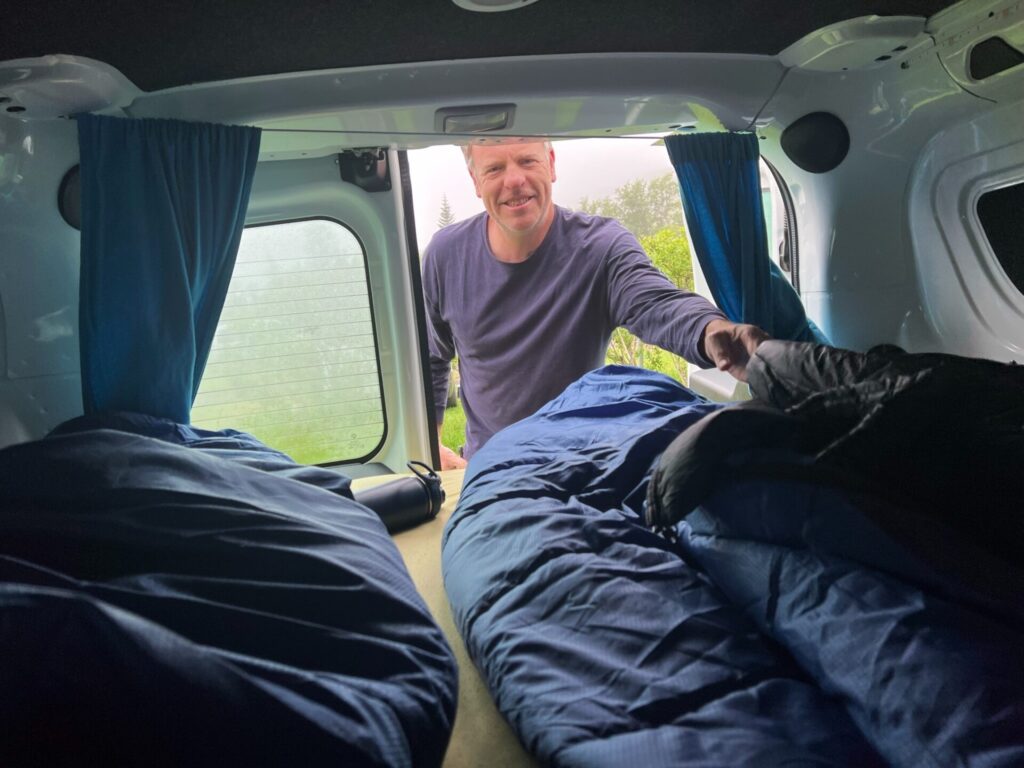
There are quite a few options out there for campervan rentals. Many tourists rent campervans in the summer, but many Icelandic people also rent. Which means there are plenty of companies catering to budgets and desires of various sizes.
We rented from Campervan Iceland. They had the best rates and flexibility for the dates we wanted. They also had a free shuttle service from the Keflavik airport, which was important to us. While we didn’t go straight from our flight to our camper or our camper to our flight, we did use the airport as a base for renting and returning rental cars as well as picking up shuttles elsewhere.
It turns out Campervan Iceland is part of a larger rental agency and it was busy not just with others renting campervans, but also with tourists renting cars. It wasn’t a quaint mom-and-pop shop.
But they were very friendly and efficient. They even helped us get to our hotel after dropping off the campervan. While the shuttle service was late getting us from the airport, and checking in and picking up our van took far longer than we anticipated, overall we were pleased with this company. Our camper was as advertised and clean.
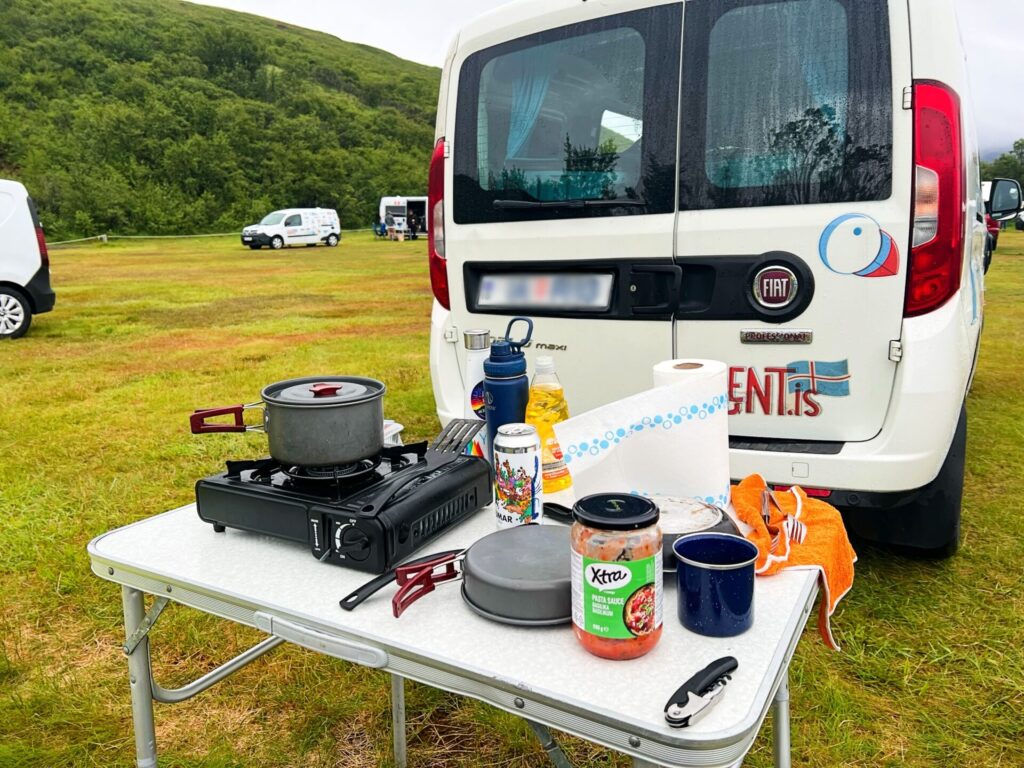
A general tip on renting vehicles, including campervans, in Iceland: take a video of your rented vehicle before you leave the lot, with your rental agent there. No one gave us a hard time about dings or scratches, but when you bring your vehicle back, they do ask to see videos, pictures, or the formal sheet the agent filled out. Unlike here in the States where return is pretty loose, in Iceland, they really do inspect closely for damages. Our rental van was already significantly dinged and dented, so we were happy I had filmed the van before leaving. Our return was smooth.
Our campervan rental came with:
a great spot to sleep complete with comfortable sleeping bags and pillows
a tiny fridge that worked on battery power
a heater if we wanted to use it that worked on battery power
a box of cooking utensils and cookware
a stove (including two cans of gas)
two camp chairs
one folding table
Our campervan rental did NOT come with:
towels of any kind (dish or bath)
dish soap
paper towels
dish sponge
flashlights or lanterns
Also to note: we rented a model that did not have any internal kitchen or cook space, nor any areas to sit NOT outdoors unless it was on the driving seats or the bed. Given the unpredictable weather of Iceland, we had quite a few moments of wishing we had somewhere inside to comfortably lounge.
We did not need any special form of insurance or license to rent our campervan. And driving it was very easy. As I shared in this post, we found driving in Iceland easy overall.
When it comes to campervans, you can rent a stick shift or an automatic. So you should be able to get a vehicle you can drive.
What to Know About Camping and Campsites in Iceland
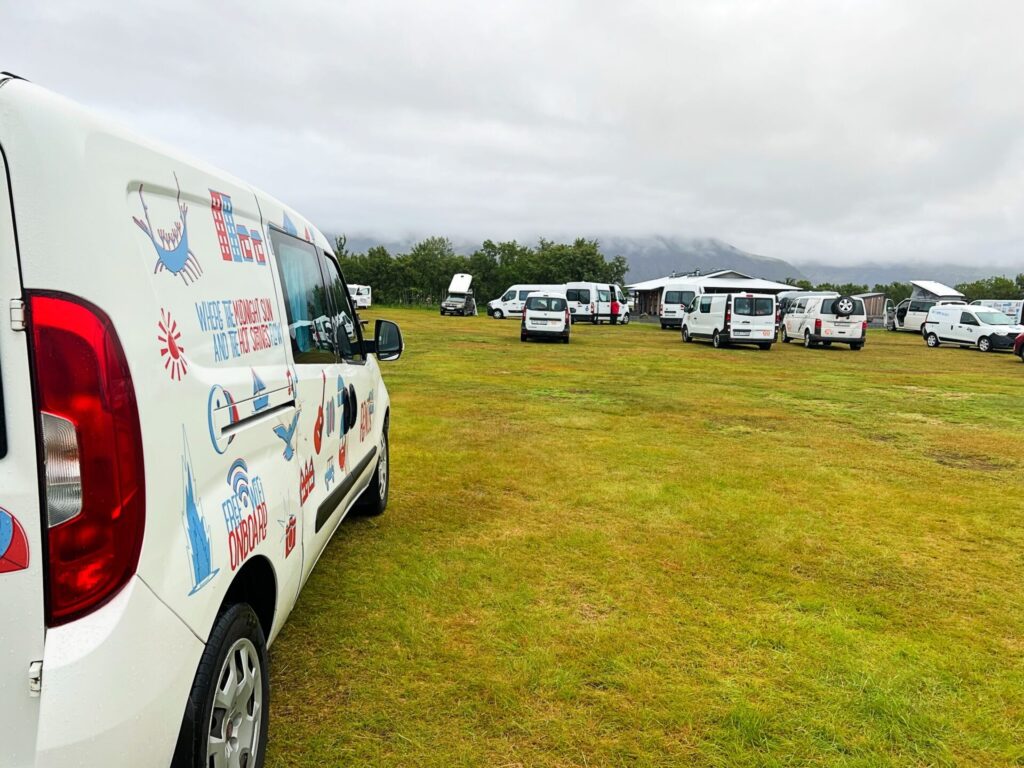
The most important thing to note for Americans when it comes to camping in Iceland is that they are entirely different experiences.
In the States, reservations for campsites (particularly National Parks and related sites) book up months in advance. In Iceland, reservations are not even taken at the vast majority of campsites, and yet they never run out of space. That’s because, unlike the States, you aren’t getting an assigned space unless you want to hook up to electric and water (and most campers in Iceland, including us, don’t, as the campers and campervans have self-contained battery-operated heaters, fridges and outlets).
In Iceland, campsites are basically large fields you pull into and find a spot and angle you like. There are still bath houses, and they were all very clean, but there aren’t picnic tables and fire bowls.
That’s because fires aren’t allowed, either. Which was a bummer, but when wood and trees are scarce, I guess it makes sense.
Also unlike camping in America, the Icelandic style of camping is pretty bare bones. It felt more utilitarian and for a purpose, less about “living outside.” Here in the States, people pack board games, outdoor grills and stoves, special rugs and outdoor lighting, bikes, music speakers, hammocks, guitars, scooters, and all the things to go live outside. Many times when we’ve camped here in the States, we end up chatting with neighboring campers who are also just hanging out. It’s part of the culture.
That’s not the culture of camping in Iceland. People pull up in the waning hours when the sun is still devilishly shining. You don’t see much of other campers lounging. They go out for a hike at 6:00 pm. They use communal kitchens to make more intense meals.
There is activity, but it’s not a party.
Also, we never had darkness the whole time we were in Iceland. So camping was a crazy, almost out-of-body, experience. It was such a memorable moment to watch the sun spitting out pinks and oranges at 10:30 at night while never actually setting.
Of course, it also meant that we were sleeping in the light, or trying to. Our camper didn’t have blackout shades, so our eye masks were pretty much a requirement.
Get Monthly Tips from the Trip Delivered
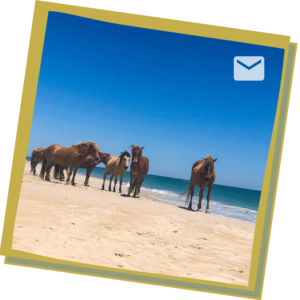
Where to Camp in Iceland
Prior to leaving for Iceland, the idea of not making reservations anywhere stressed me out. When I go to a foreign country, I find comfort in knowing that at least transportation and lodging is taken care of. That way, I can tackle other challenges that may arise. Getting a campervan in Iceland simply didn’t allow for that comfort.
Yet I quickly came to love it. Iceland really does have plenty of spaces to camp. Note that they have a strict rule about only camping in campsites, and not boondocking or “wild camping.” While we saw a police officer only once our entire time in Iceland (and it was apparently so remarkable our tour guide pointed it out), the rules are made so campers don’t park on private property. Theoretically, if someone saw you wild camping and if it was their land, or even not, they’d have recourse.
It is kind of strange as Iceland has such vast landscapes of nothingness that camping there seems so trivial and also natural. But campervans don’t have running water or bathrooms. So ultimately, it makes sense. Go camp near a toilet, please.
Also, we were here in summer, the high season. We didn’t encounter any closed campsites. But we did always check before driving to a campsite that they were open, and many close down for the winter.
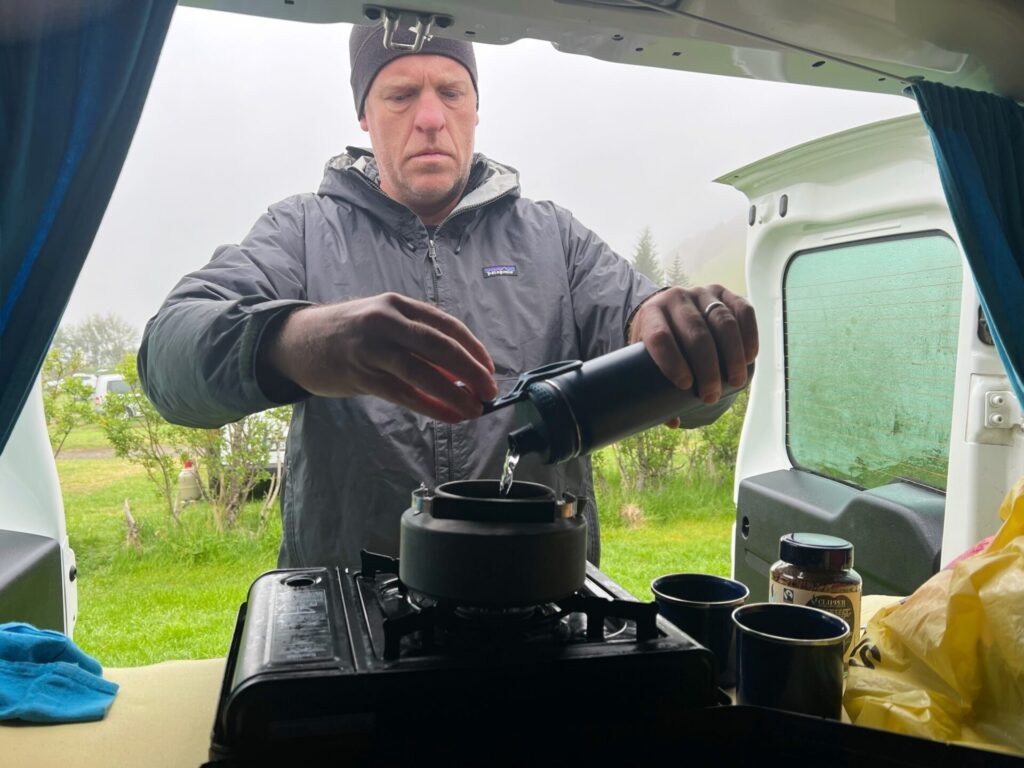
There are quite a few sites out there that purport to be a full guide of all the campsites in Iceland. But we had the best luck with Google maps. We’d Google “camping” near us, and then find what worked.
As we found with the United States, national sites tended to be much better than private sites. There was more space, they were cheaper, and the facilities were gorgeous.
If you want to shower, you would be well-served to make sure that your campsite has free showers before you arrive. Some private campsites have coin-operated hot showers.
I shared in our full itinerary the three campsites we stayed at, but we particularly loved camping at Thingvellir.
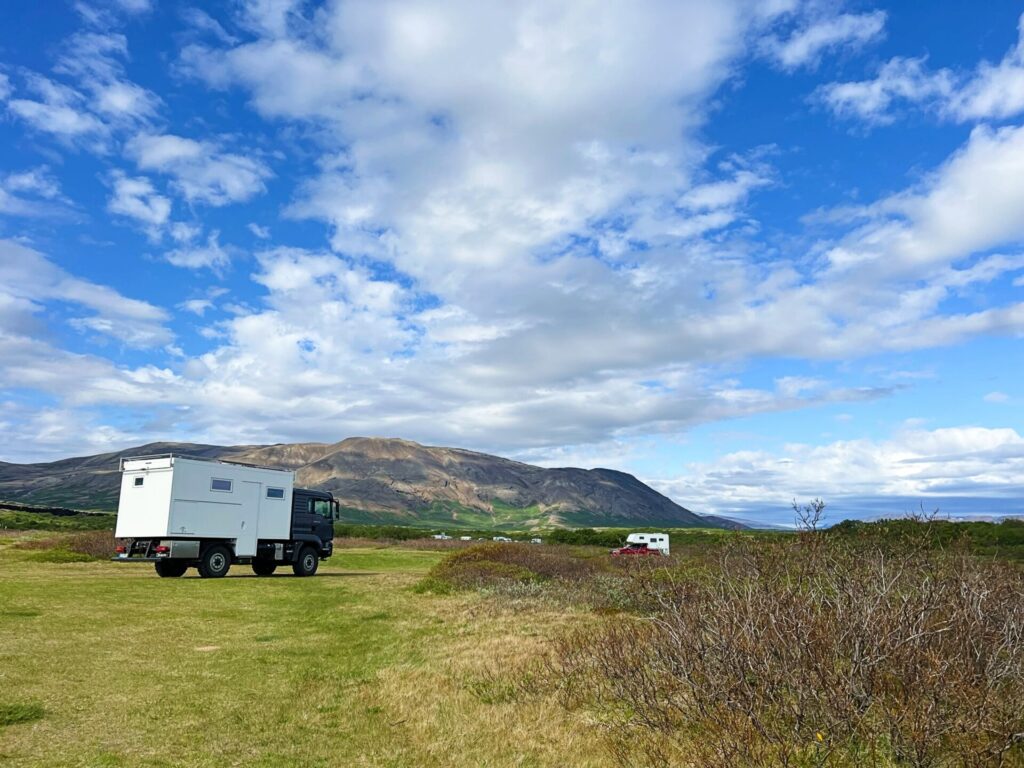
If you want to look before you go and have a general idea as to where you want to camp, this site was the most useful (filter for “camping” in the left sidebar). But, again, you’ll want to doublecheck on Google maps that the private sites are open before you pull in.
Do You Need the Camping Card to Camp?
While you have to rent your vehicle, you also have to pay for a campsite (just like in the States). A site was anywhere between $12 – $20 USD a night.
There is a special camping card available for Iceland. At the time of our trip, it was around $200 USD. Mathematically, it didn’t seem to make sense for us. And we never had a situation where we pulled into a site and it was required to get a spot.
Is Camping in Iceland Worth it?
I understand that camping isn’t for everyone. Moving our suitcase from under the bed to get anything out of it was a pain. I wore hats since blowdrying and styling my hair wasn’t a thing. We had some chilly mornings and some light drizzle we just had to deal with. We couldn’t find darkness when we wanted to sleep and showering was an experience.
But I would do this again in a heartbeat.
Not only that, but I would campervan other places, too. I am grateful that Iceland was such a warm and gentle place to try this lifestyle for the first time.
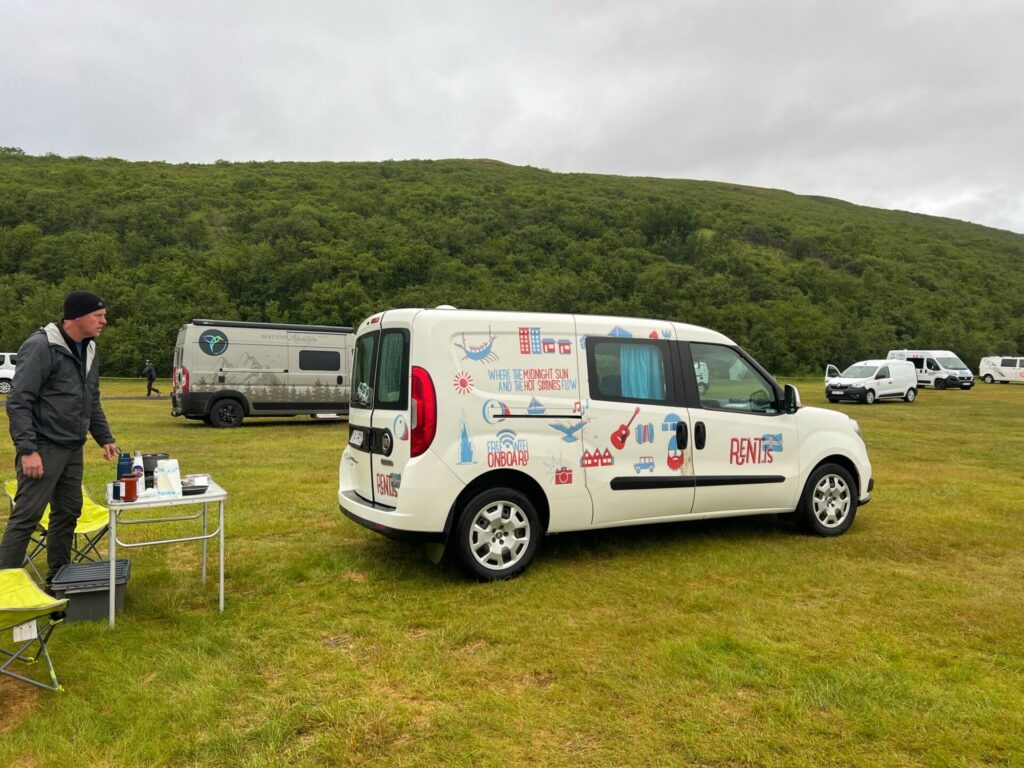
I found phenomenal joy in being in close quarters with Mr. Family Trip. Without anything else to distract us, the stresses and emails and texts slipped away and it was just us.
I would find myself in disbelief that this was my life as I was sitting underneath Icelandic mountains topped with glaciers while eating pasta with marinara sauce.
I didn’t care how I looked (I barely saw a mirror) and, instead, only cared about how I felt. And it is so much easier to live life that way.
I also found it incredibly fun! It was fun to follow the whims and desires of what we wanted to do that night and that day. If we wanted to stay in a town we had never heard of and not keep driving, we did. We had tours booked and things we wanted to see, so it wasn’t like we strayed from our planned itinerary too much. But we did enjoy the ease of changing our minds and doing what we wanted when we wanted.
In the morning, we made our coffee in the parking lot and walked with the steaming mugs to the Silfra Fissure. In the evening, we rolled into camp and decided to head out for a hike. One afternoon, we pulled the shades closed, turned on the heat, and crawled under the sleeping bags for one of the best naps I have ever had – and we were in a parking lot.
It turns out that what camping in Iceland offered, what our campervan provided, was freedom. And that was healing.
